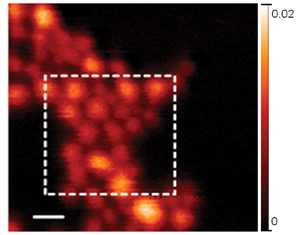Article contents
Relating nanoscale structure to optoelectronic functionality in multiphase donor–acceptor nanoparticles for printed electronics applications
Published online by Cambridge University Press: 05 October 2020
Abstract

This work investigated the photophysical pathways for light absorption, charge generation, and charge separation in donor–acceptor nanoparticle blends of poly(3-hexylthiophene) and indene-C60-bisadduct. Optical modeling combined with steady-state and time-resolved optoelectronic characterization revealed that the nanoparticle blends experience a photocurrent limited to 60% of a bulk solution mixture. This discrepancy resulted from imperfect free charge generation inside the nanoparticles. High-resolution transmission electron microscopy and chemically resolved X-ray mapping showed that enhanced miscibility of materials did improve the donor–acceptor blending at the center of the nanoparticles; however, a residual shell of almost pure donor still restricted energy generation from these nanoparticles.
Information
- Type
- Research Letters
- Information
- Copyright
- Copyright © The Author(s), 2020, published on behalf of Materials Research Society by Cambridge University Press
References
- 6
- Cited by


